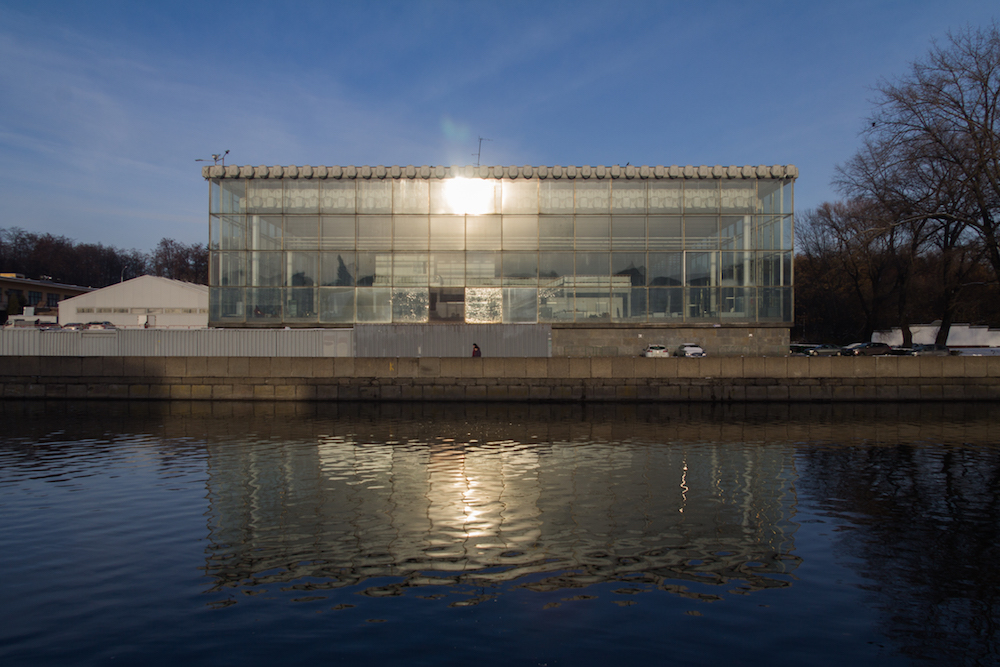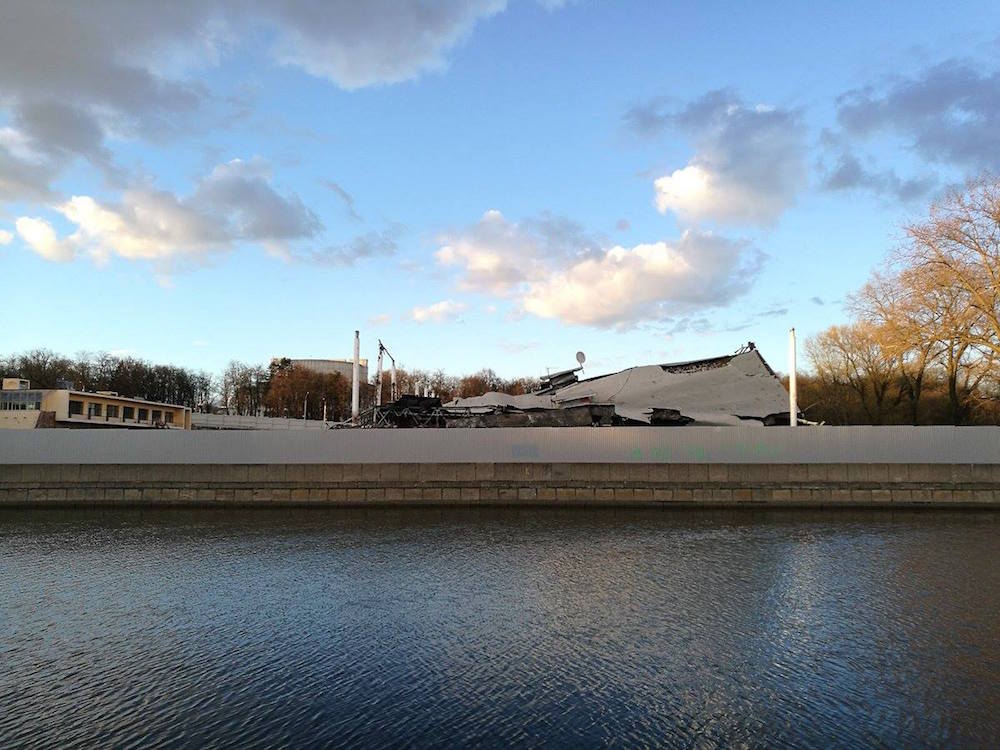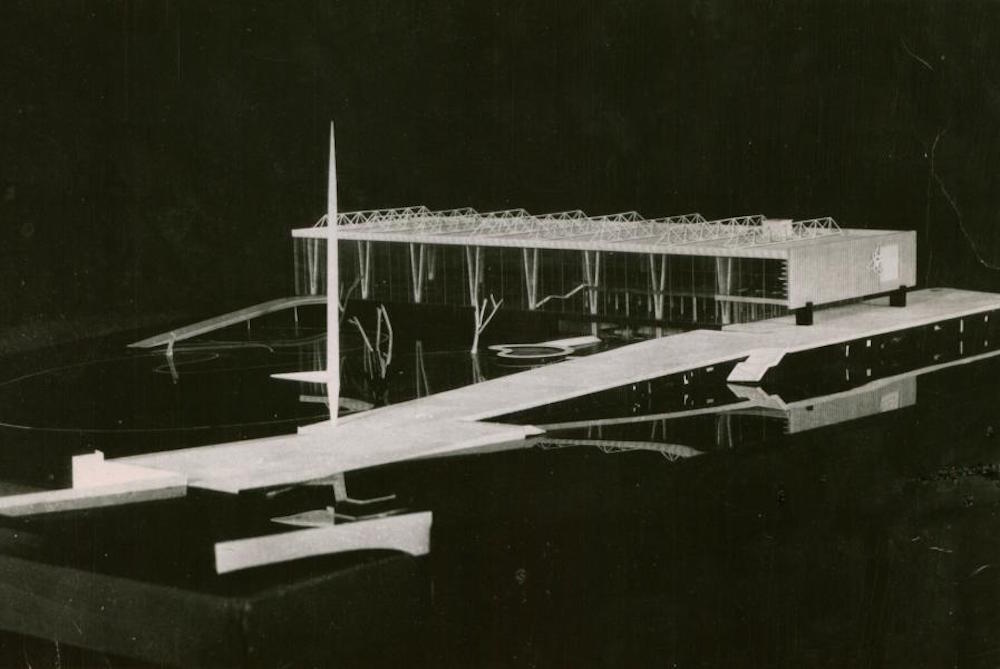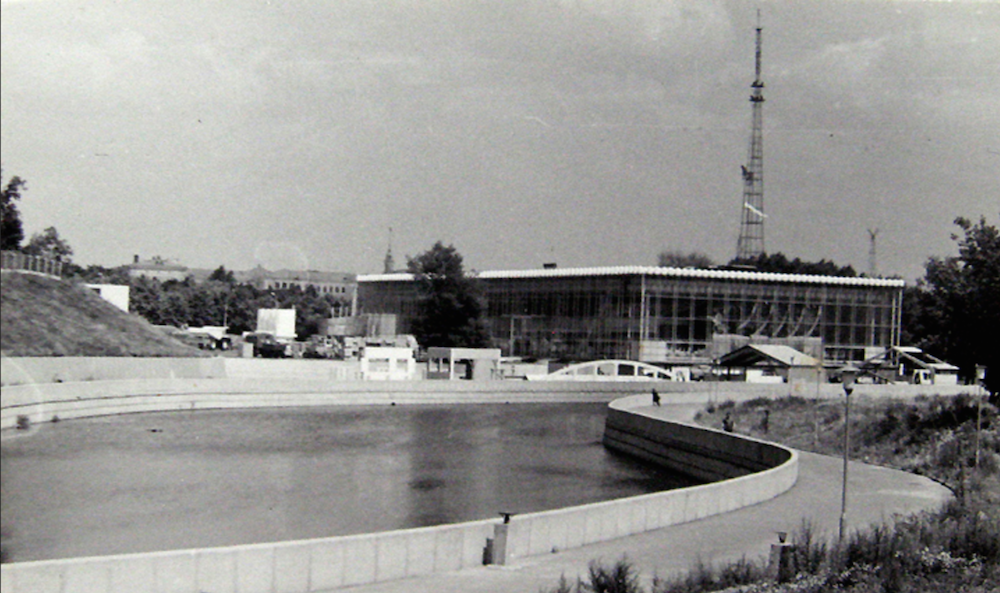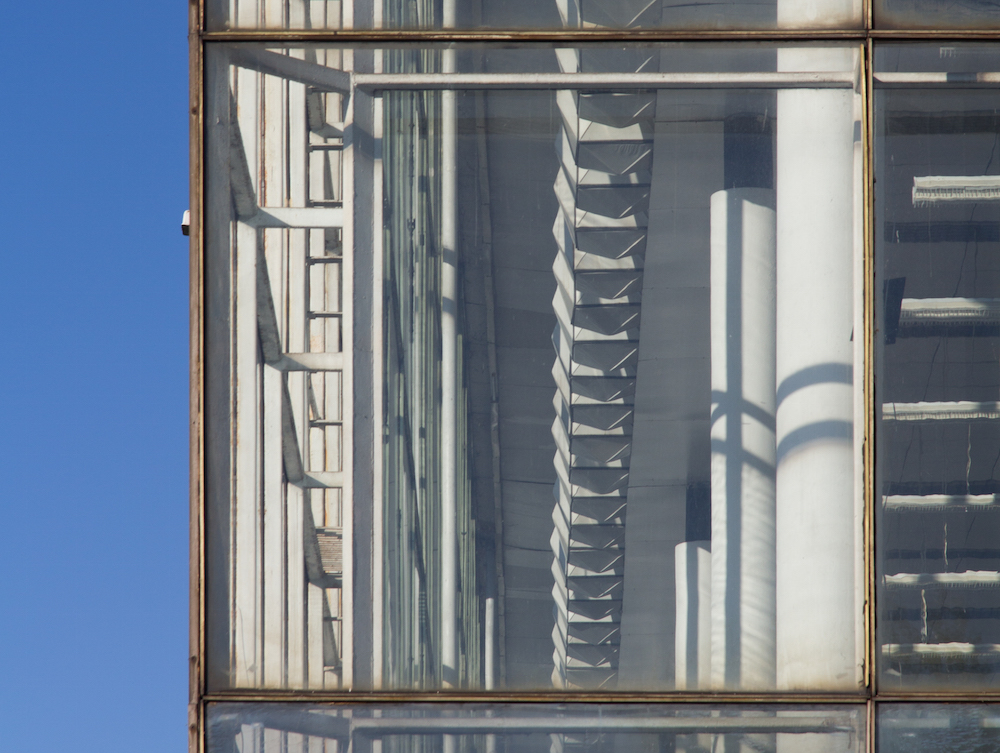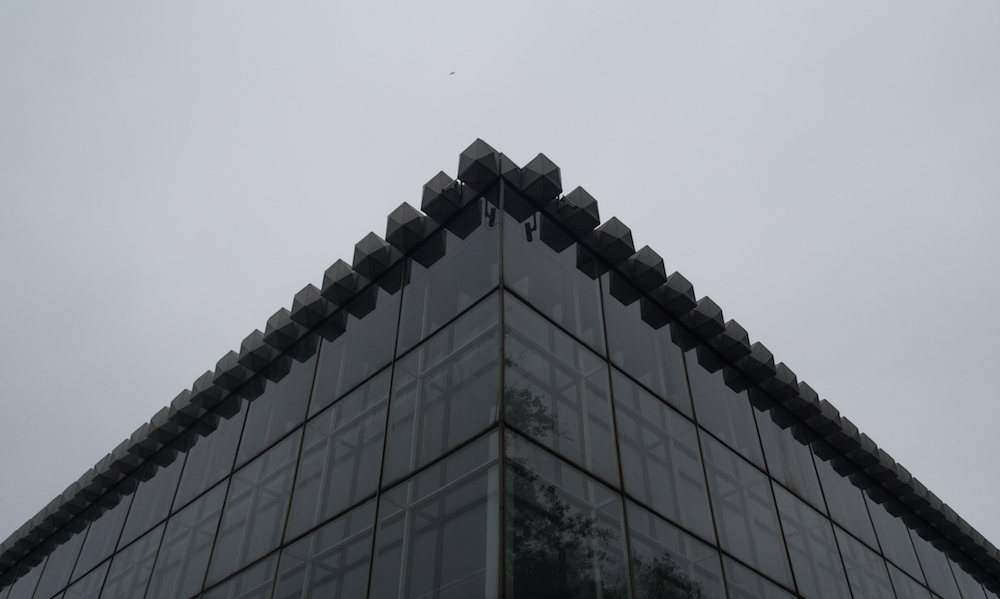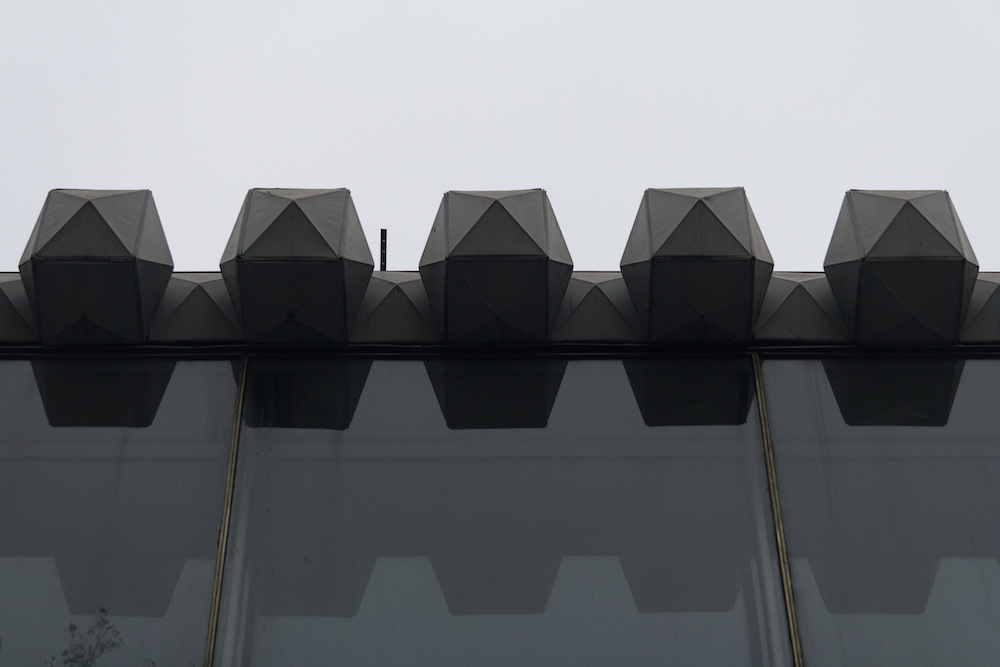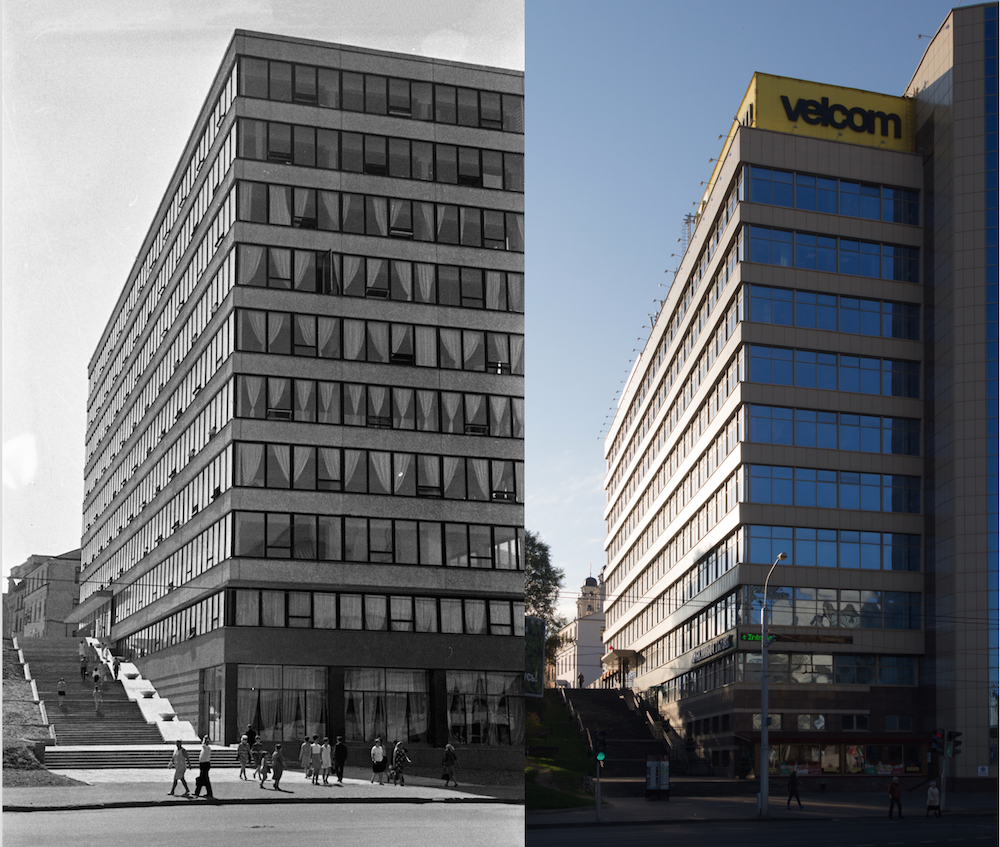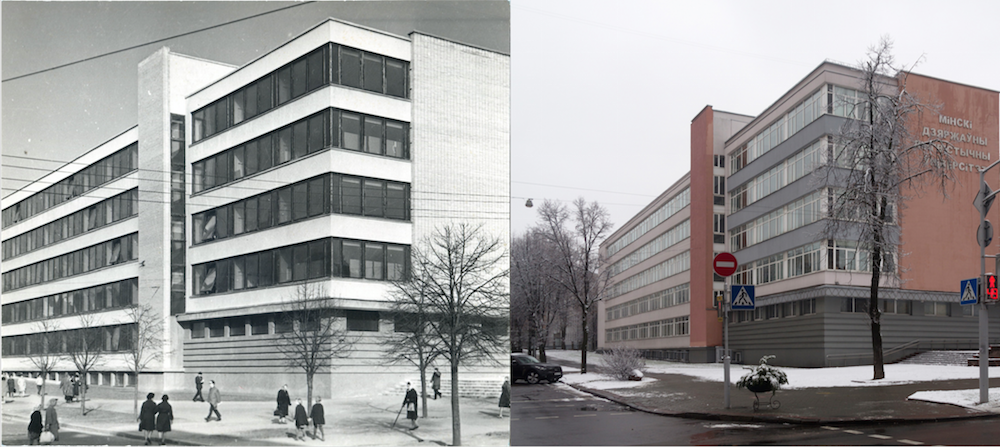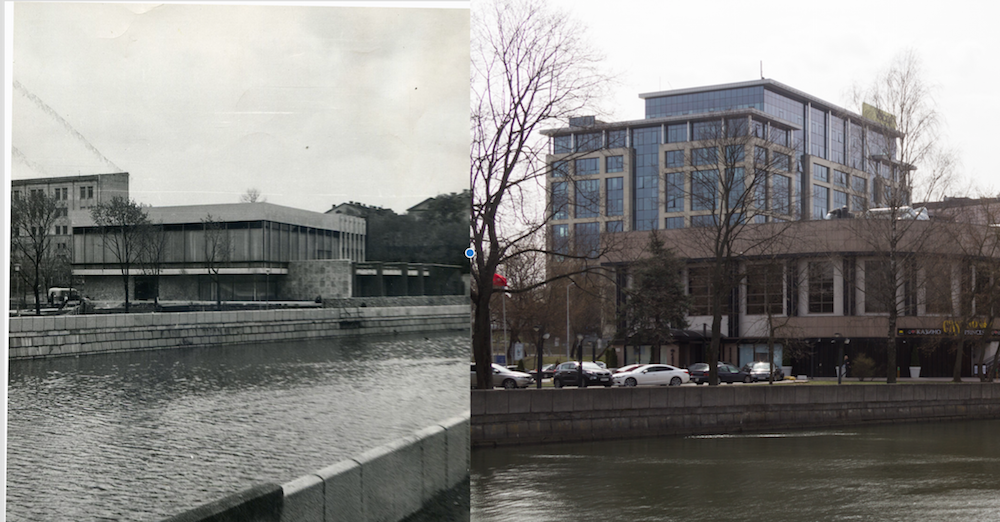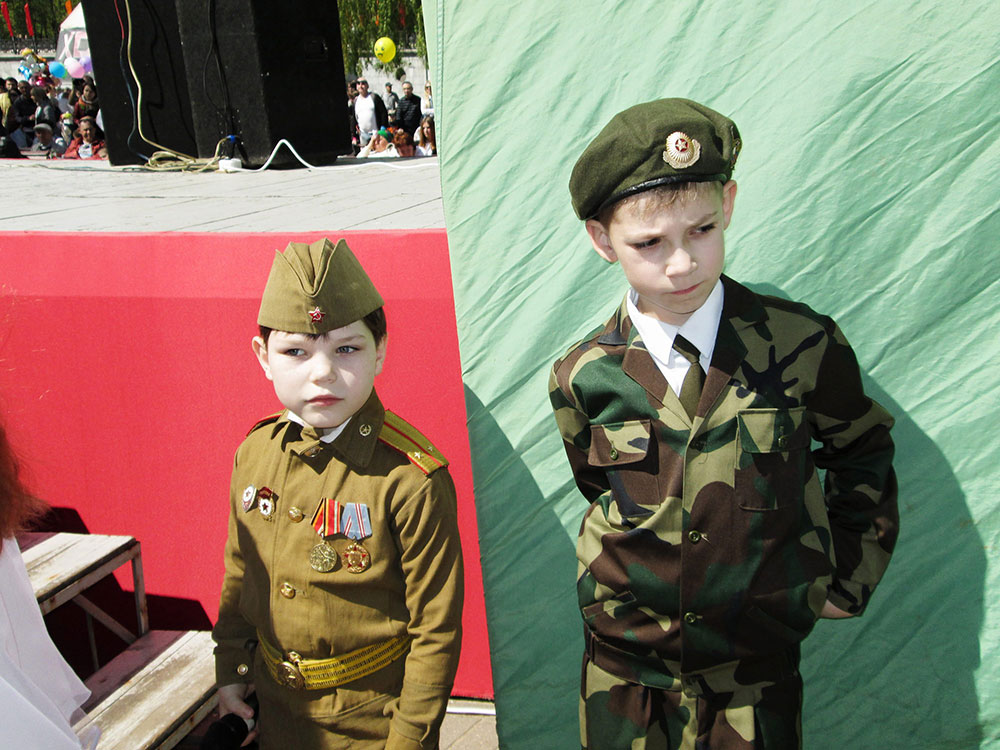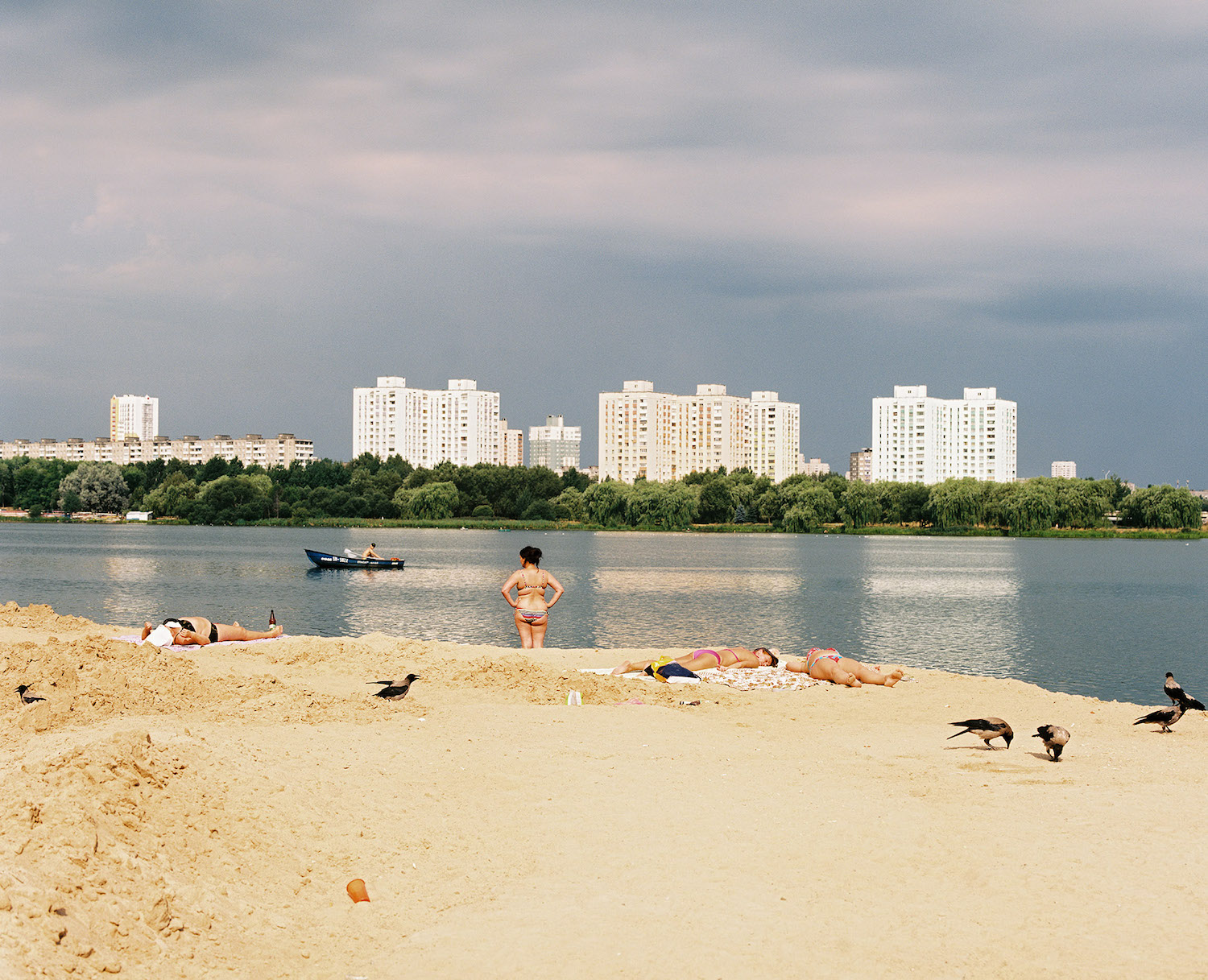The death of modernist Minsk? The demolition of an architectural landmark in post-Soviet Belarus

Minsk’s Exhibition Centre, or VDNKh, was the city’s finest example of International Style architecture – and now it’s gone. Dimitrij Zadorin explains why Belarus needs the modernist values of transparency and openness now more than ever
There had been no protests in Minsk for a long time. Minsk was quiet. And then, on 25 March 2017, the cruelty and intolerance of power once again re-asserted itself, in dramatic style. The capital was converted into a stage for a spectacle of riot dispersal, truncheon-beatings of innocent students and pensioners, and mass arrests. While this was going on, the progressive community, the city’s aesthetes and liberally-minded citizens, were bidding their final farewells to – and shedding tears over – one of Minsk’s best-loved specimens of post-war modernist architecture: the National Exhibition Centre, or VDNKh as it is universally known.
In contrast to adjacent Ukraine, where every protest is directed against the misbehaviour of the authorities or their increasingly far-fetched attempts to praise national independence, such as the recent proposal to place an angel-crowned column in the midst of Kharkiv’s Freedom Square, here, in Belarus, the resistance seems to have no political roots. Both complaints are driven – at least formally – by economic motives. Street protestors feel threatened with impoverishment due to the infamous Parasitism Tax, levying a €230 ($259) annual fine on all able-bodied unemployed adults. The guardians of VDNKh, meanwhile, see the building as yet another victim of senseless destruction, driven by ruthless capital from abroad.
Unlike the street protests, however, the reaction to VDNKh’s demolition did not extend beyond low-voiced irritation. Nobody picketed outside, nobody chained themselves to the railings and almost until the ultimate perdition of the site, at which point the tears began to flow, there was nobody who even seemed to care.
The Minsk VDNKh was built for the 50th anniversary of the Belarusian Soviet Republic. The complex consisted of the main pavilion – a simple 90 by 50 metre box – with an open exhibition area on one side and a park on the other. The architectural gesture was one of both great expanse and expense: for the sake of immersing the building into the surrounding greenery and opening it up to the River Svislach (which passes on the south-west side), the Soviet authorities were willing to sacrifice two old city quarters and thousands of square metres of exhibition space. The building itself, reincarnating a popular architectural model of the time that conflated concepts of “exterior” and “interior” – the “glass box” – flaunted its conspicuous details: in each architectural element (the stairs, curtain wall and cornice in particular) there was a legible tendency to render mass-produced elements of construction pieces as mildly decorative, almost craft-like objects.
However, shortly before the pavilion was completed, the Prague Spring of 1968 broke out. The attempt by the new Czechoslovak government to establish “socialism with a human face” resulted in an uprising which was quickly suppressed by the armies of the Warsaw Pact. In the aftermath, most liberalisation processes in socialist countries were frozen, and the contradictions between the West and the Eastern Bloc, isolated behind the Iron Curtain, were reaffirmed. Political changes were followed by assaults on the “International Style” that held sway over Soviet architecture at the time. This style shared the same functionalist base models as the Modern movement in Europe and promoted openness, transparency and lightness. But with these very qualities suddenly under attack, the architectural Iron Curtain was drawn shut along with the political. Designers now headed for monumentalism.
The architecture of VDNKh, as it was then customary to say, “grew out of date even before completion.” All of the pavilion’s faults were suddenly laid bare: its unfortunate placement, the lack of territorial reserves for expansion, technical imperfections (overheating in the summer and freezing in the winter) caused by the excess of glass. Its lofty first description – the “Crystal Palace” – was replaced by the mocking sobriquet “Aquarium”, transforming visitors from excited guests into decorative fishes. Architectural vales had shifted: in distancing itself from the models of the 1960s, Soviet Modernism had reinforced its image as an official state style, thus undermining its chances of garnering appreciation in the future.
The architectural gesture was one of both great expanse and expense
Today, those who criticised the International Style in their earlier years wield significant influence over architectural practice in the city. While their overall design methodology is unchanged since the Soviet period, they have shifted the emphasis from function to form. The main aim of architectural professionals is now a unique and beautiful image, rather than a construction with a specific purpose. As the years have passed, this idea of architecture as art has only grown stronger. One of the representatives of the architectural elite in Lukashenko-era Minsk is Oleg Vorobyev, who was happy to present his winning design for the Emirati-built hotel complex that will replace VDNKh. Others from the same generation teach in Minsk’s Architecture Faculty, the main forge for architects in the country. Praising “diversity” as opposed to the supposed “monotonousness” and “simplicity” of the functional architecture of the 1960s, they inculcate hatred for the Modernist heritage. Even Yuri Gradov, the only surviving author of the building and currently a professor of design, speaks of his own work in a resigned tone: “I react quietly to the possibility of the disappearance of the pavilion. The city is growing; its needs are changing.”
Perhaps ironically, such an attitude towards VDNKh is in essence ideologically “correct”. Pure Modernism was not sentimental; movement lay at its source, and the idea of conservation was alien to it. It was ready to pay the price in order to smash apart the past. This was dry, honest, risky architecture; not one that demanded or expected tears of contrition.
On the other hand, no other architectural movement in Minsk has been more fragile than the International Style. Squeezed between Khrushchev’s classicism and Brezhnev’s monumentalism, it blossomed only briefly, in the 1960s. During this period many important buildings were constructed in the capital, but most of them have been mutilated in recent years. Some were reshaped beyond recognition, such as Zhuravinka Café. Its light box form, raised above the ground and overlooking green surroundings, was rebuilt under the guidance of Turkish architects into an amorphous heap of volumes, whose kitschy facades, concealing a casino, convey arrogance and darkness. Other specimens of the epoch acquired new skins, shedding their original transparency and refinement. The buildings of the Belpromproyekt Design Institute and the Minsk State Linguistic University are the most telling examples. VDNKh, though, is the first architectural specimen of the epoch to undergo a full-fledged demolition, rather than the cosmetic damage previously meted out to the architectural heritage. If this is a mistake, then nobody will ever manage to correct it.
If this is a mistake, then nobody will ever manage to correct it
The exhibition pavilion had become a symbol of an era in which the value of openness transcended pure spatial concepts. This openness is exactly what we lack today: it is not the first time that the state, while handing over valuable plots to foreign investors, has ignored any public opinion. But it is the treatment of VDNKh – its replacement by the bulky privatised luxury of the Emirati hotel – which makes the assault on openness so obvious. The architecture of the building reflected the ideal of transparency not only in spatial terms, but also as a symbol of the ambitions of the 1960s to build that “socialism with the human face”, which ended with the dispersal of the Prague Spring. In this light, any protests against the demolition of the complex are less economical or aesthetic complaints than a truly political act.
Regardless, the demolition of VDNKh has been completed. Modernism is progressively disappearing from the image of the city. Soon it will be at death’s door. Modernism might not have been sentimental, but us inhabitants of Minsk are allowed to be so. It is we who will mourn over this building’s grave.
With thanks to Michał Murawski for his help with the text.

